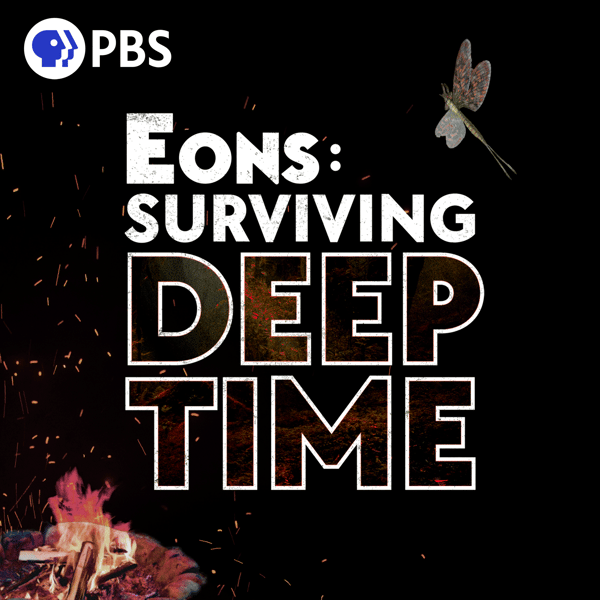Will We Survive The Future? (with John Green!)
Eons: Surviving Deep Time
PBS
4.9 • 853 Ratings
🗓️ 18 March 2025
⏱️ 73 minutes
🧾️ Download transcript
Summary
Just because our ancestors have made it through every major period of upheaval in the Earth’s history so far doesn't mean that our survival through future changes is guaranteed. Humans have become a force of nature, but will we survive ourselves?
--
Eons is a production of Complexly for PBS Digital Studios.
If you'd like to support the show, head over to Patreon and pledge for some cool rewards!
Want to follow Eons elsewhere on the internet?
Facebook
YouTube
Twitter
Instagram
Transcript
Click on a timestamp to play from that location
| 0:00.0 | It's a cool, crisp, clear day, and you're standing at the edge of a shimmering lake in the center of a dense evergreen forest. |
| 0:09.0 | This lake is fairly small. You could walk around its entire perimeter in about 15 minutes, but it contains some big implications that some argue could define our current period of time. This little, unassuming body of water is called Crawford Lake, |
| 0:24.6 | but its name in the Wendat language spoken by the indigenous people |
| 0:28.6 | native to this region of what's now Ontario, Canada, |
| 0:31.6 | means where we have a story to tell. |
| 0:34.6 | As you gaze into the still blue-gray waters, you see only your own reflection |
| 0:40.1 | staring back. There's no obvious indication that what lies beneath the surface is something |
| 0:45.5 | with potentially enormous significance, something that reflects more than just a human face, |
| 0:50.8 | but human actions too. Because this lake is unusually deep for its size, |
| 0:56.9 | deep enough that its upper and lower layers never mix, which keeps the sediment layers at the |
| 1:02.5 | bottom almost totally undisturbed. As those sediment layers have been deposited on top of each |
| 1:07.7 | other year after year, they formed a unique historical record of environmental |
| 1:12.6 | change, one that spans around 1,000 years in the past right up to the present day, where you are now. |
| 1:19.6 | And within those muddy layers is one that dates to the mid-20th century, a dark brown stretch of sediment that resembles the others but contains something not found in any previous layer. |
| 1:30.3 | It's a sprinkle of radioactive plutonium fallout, a consequence of the increased testing of nuclear bombs in the 1950s. |
| 1:40.3 | This marker is a glaring signal of humanity's effect on the world, of events that occurred thousands of miles away, having a global impact so big they left a mark at the bottom of this Canadian lake. |
| 1:53.4 | That signal will persist in the depths of Crawford Lake for millennia to come, which is why some researchers have argued that it should be formally |
| 2:02.2 | recognized as what geologists call a golden spike. This boundary would mark the end of the Holocene |
| 2:08.7 | epoch, which has spanned the last 11,700 years, and the start of a new period of geologic |
| 2:15.7 | time, one defined by the effects of human activity |
| 2:19.0 | on the modern world, the Anthropocene epoch. It's just one of many possible golden spikes |
| 2:25.0 | that have been proposed, and its significance to science, to society, and to those who come after us, |
... |
Transcript will be available on the free plan in -12 days. Upgrade to see the full transcript now.
Disclaimer: The podcast and artwork embedded on this page are from PBS, and are the property of its owner and not affiliated with or endorsed by Tapesearch.
Generated transcripts are the property of PBS and are distributed freely under the Fair Use doctrine. Transcripts generated by Tapesearch are not guaranteed to be accurate.
Copyright © Tapesearch 2025.

